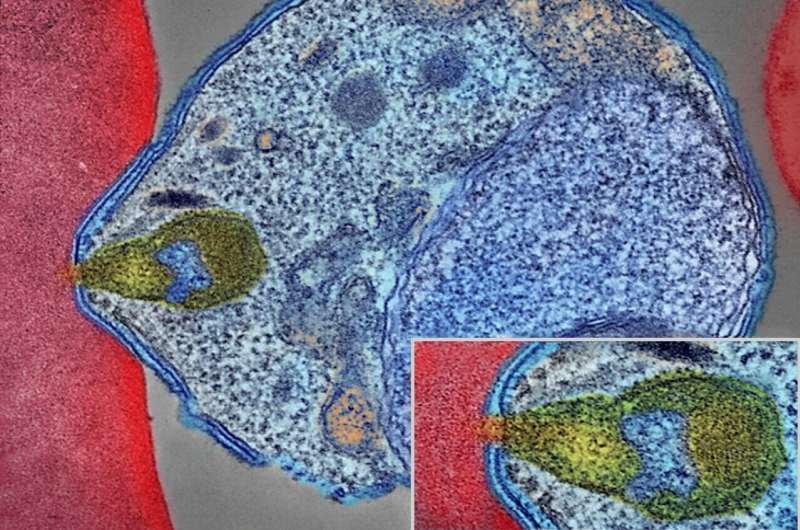This article has been reviewed according to Science X's editorial process and policies. Editors have highlighted the following attributes while ensuring the content's credibility:
fact-checked
peer-reviewed publication
trusted source
proofread
For a new approach to fighting malaria, study focuses on special RNA molecules in human malaria parasite

The mosquito-borne infectious disease malaria resulted in about 241 million clinical episodes and 627,000 deaths in 2020. In young children and pregnant women living in areas where the disease is endemic, a major cause of death is Plasmodium falciparum, the most virulent, prevalent, and deadly human malaria parasite.
Scientists are keen to understand the mechanisms that regulate gene expression through the different stages of P. falciparum's lifecycle because such knowledge can help in the discovery of novel antimalarial therapies. One focus of their research is "lncRNAs," which are long noncoding ribonucleic acid molecules found in cells of eukaryotes—organisms whose cells have a nucleus. Many noncoding RNAs have been linked to cancer and neurological disorders. LncRNAs are found also to regulate genome structure and gene expression.
A team led by Karine Le Roch, a professor of molecular, cell and systems biology at the University of California, Riverside, has studied the role lncRNAs play in P. falciparum and found that one lncRNA—lncRNA-ch14—partially regulates sexual differentiation and sex determination in P. falciparum.
"We can now target specific lncRNAs to stop P. falciparum's life cycle progression, including sexual differentiation," Le Roch said. "We found evidence that lncRNAs are distributed in distinct cellular compartments in P. falciparum. Depending on their localization, they are found to play important roles in regulating gene expression and the malaria parasite's life cycle progression."
Study results appear in Nature Communications.
The research team identified 1,768 lncRNAs in P. falciparum, of which 718 lncRNAs had never before been identified. The team validated that some of these novel lncRNAS are critical for the parasite's life cycle progression.
"Our findings bring new insight into the role of lncRNAs in P. falciparum's capacity to cause malaria, gene regulation, and sexual differentiation," said Le Roch, who directs UCR's Center for Infectious Disease and Vector Research. "This can open up new avenues for targeted approaches towards therapeutic strategies against P. falciparum that are aimed at stopping the parasite's life cycle progression and its sexual differentiation and blocking the transmission of the parasite into mosquitoes."
The research was a collaboration with scientists at the University of Washington, Johns Hopkins Bloomberg School of Public Health, and The Wellcome Sanger Institute.
More information: Gayani Batugedara et al, Novel insights into the role of long non-coding RNA in the human malaria parasite, Plasmodium falciparum, Nature Communications (2023). DOI: 10.1038/s41467-023-40883-w
Journal information: Nature Communications
Provided by University of California - Riverside





















